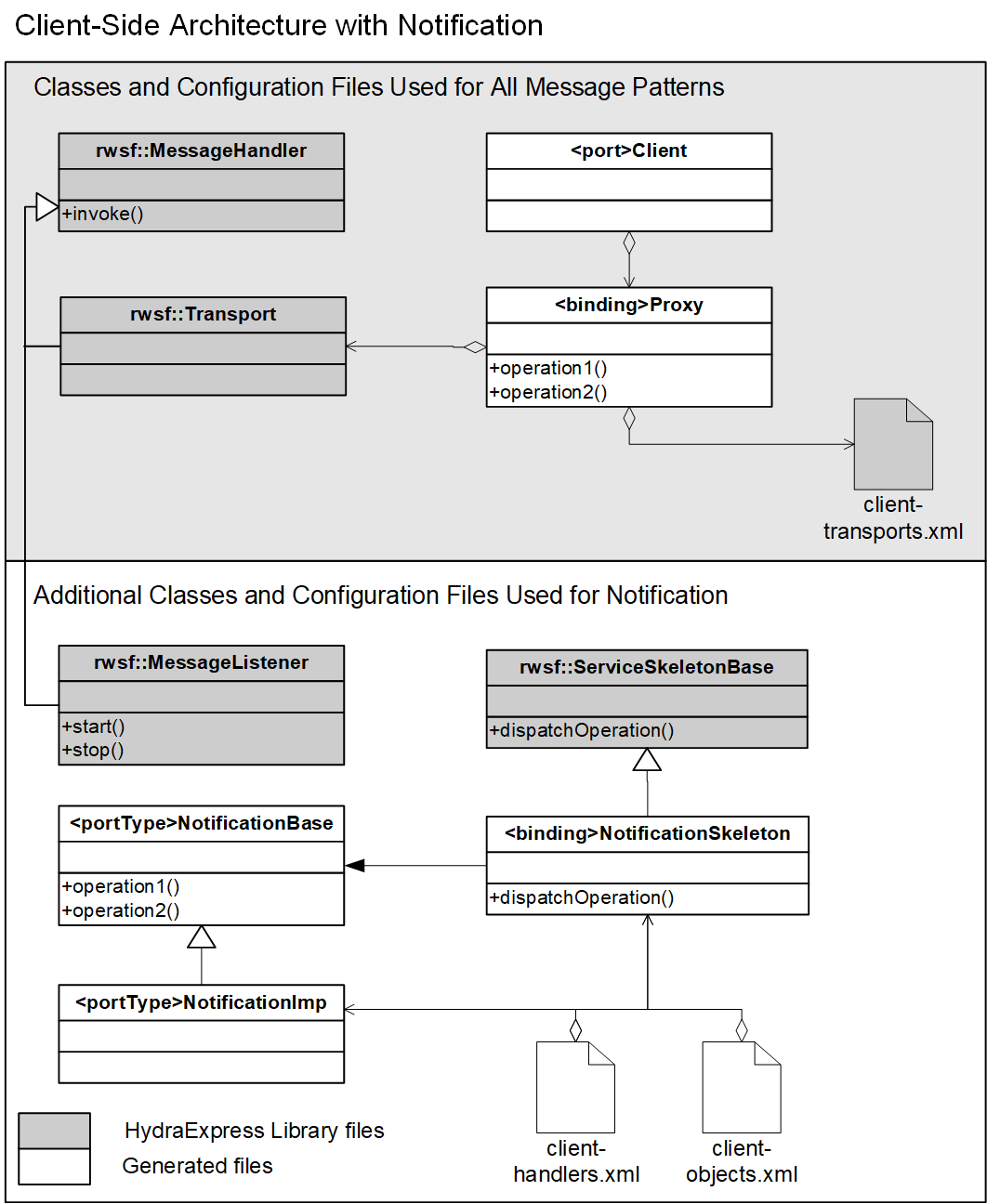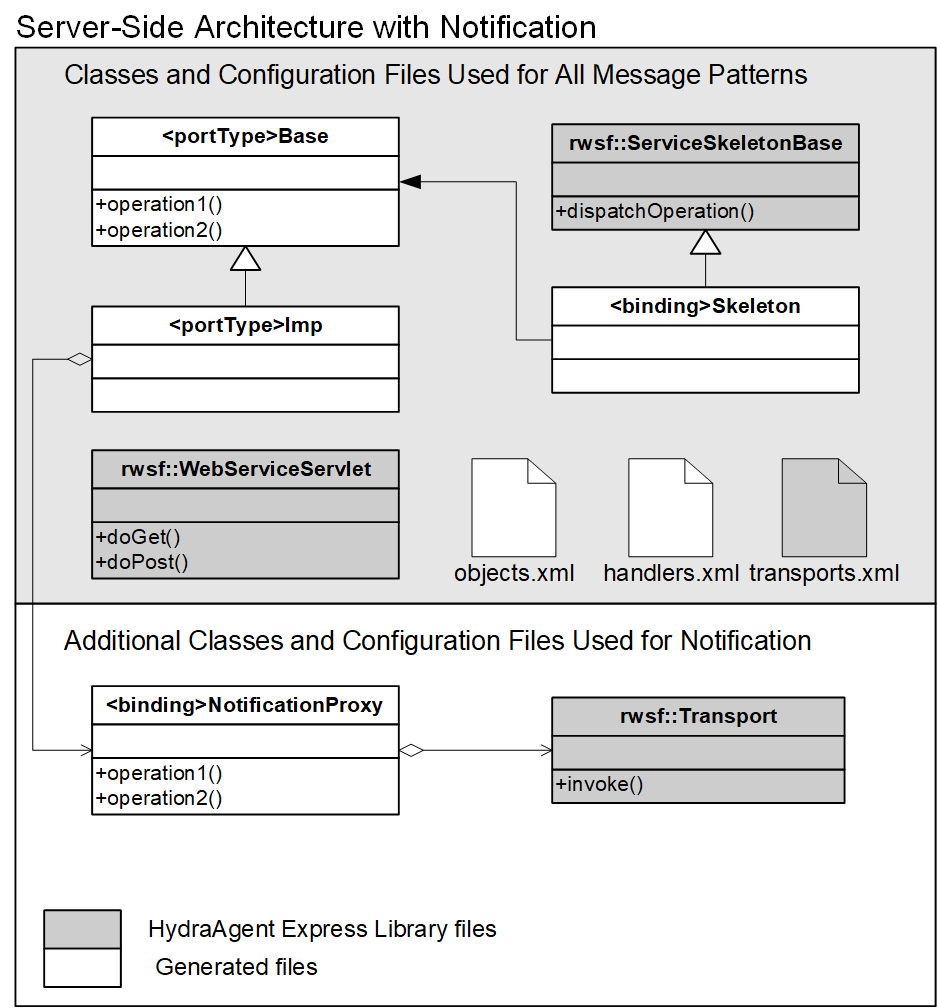Architecture of the Notification Classes
The implementation of a notification operation requires the client to take on additional functionality that is more typically server-like, while the server must take on additional functionality that is more typically client-like. The client must now have the ability to listen for an incoming message; the server, on the other hand, must be able to initiate a message.
In this way, notification blurs the traditional distinction between a client and a server. Clients become servers; servers become clients.
The following two diagrams illustrate the architecture of the generated client and server-side notification code.
Figure 5 – Architecture of the generated client-side notification classes

At the top of the figure are the general client-side classes that are always generated for any message pattern. Below are the notification-specific classes. Note that the notification classes look like server-side classes, yet they are for use on the client. These classes give the client the required functionality to set up a listener to receive notification.
Additionally, two specialized configuration files are generated:
The server-side architecture looks like this:
Figure 6 – Architecture of the generated server-side notification classes 

At the top of the figure are the classes normally generated on the server side. Below is a special NotificationProxy class that is used to send a message to the client. No special configuration files are required on the server side.





